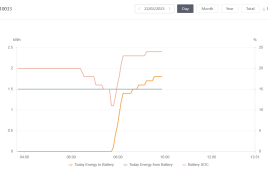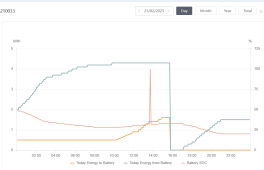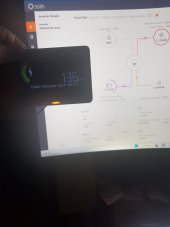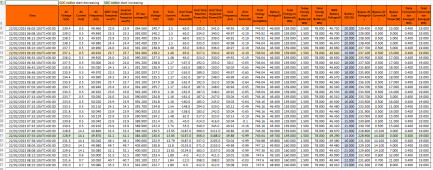Morning all, has anybody seen this on their set up?
I have 20% discharge limit set with 10% forced discharge. About once a fortnight it wakes up, dumps 10% charge to the grid, then re-imports it plus a bit more. Usually this happens between 6am and 8am, but has occurred as early as 12am. I've analysed the patterns and they are always the same over the same duration (1hr 20 minutes). The 10% discharge appears faster than my average nightly usage so I say 'dumping' rather than 'using'. So, when this happens I'm already down by over 1 kWh.
To put that 10% discharge into perspective, that wold usually last me 3 hours at peak time (6-9pm with microwave, kettle, airfyer and 2hrs TV (48") etc. and lights on).
I've had them since November so I could understand about settling in or testing, but I'm nervous that once I manage to get more than 20% (SOC 40%) on an average day I should be able to carry over to the next day (only happened twice so far....). I don't want to see that being dumbed over the summer! It's a 9.6kW system and I plan to change the parameters to 10%/90% mid-march.
Also, what is the point of a forced charge (discharge). If I have set it at 20%/80% why would it go beyond that - and for that matter, why go below 10% on the forced discharge cycle?
Graham.


I have 20% discharge limit set with 10% forced discharge. About once a fortnight it wakes up, dumps 10% charge to the grid, then re-imports it plus a bit more. Usually this happens between 6am and 8am, but has occurred as early as 12am. I've analysed the patterns and they are always the same over the same duration (1hr 20 minutes). The 10% discharge appears faster than my average nightly usage so I say 'dumping' rather than 'using'. So, when this happens I'm already down by over 1 kWh.
To put that 10% discharge into perspective, that wold usually last me 3 hours at peak time (6-9pm with microwave, kettle, airfyer and 2hrs TV (48") etc. and lights on).
I've had them since November so I could understand about settling in or testing, but I'm nervous that once I manage to get more than 20% (SOC 40%) on an average day I should be able to carry over to the next day (only happened twice so far....). I don't want to see that being dumbed over the summer! It's a 9.6kW system and I plan to change the parameters to 10%/90% mid-march.
Also, what is the point of a forced charge (discharge). If I have set it at 20%/80% why would it go beyond that - and for that matter, why go below 10% on the forced discharge cycle?
Graham.








